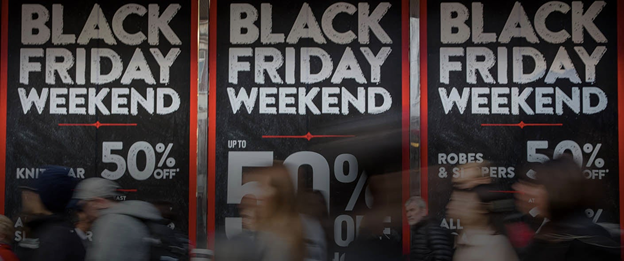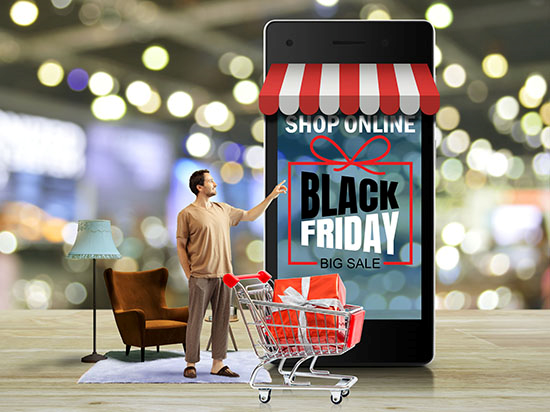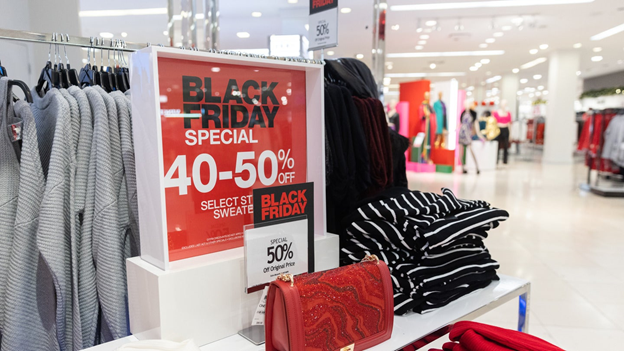An In-Depth Analysis
Black Friday is a pivotal event in the retail calendar, marked by substantial discounts and extensive sales, both online and in-store. It traditionally kicks off the holiday shopping season, drawing millions of shoppers with the promise of significant savings. This document provides a detailed analysis of Black Friday Sales, including their evolution, economic impact, strategies employed by retailers, and the future outlook.
The Evolution of Black Friday Sales

Early Days
Black Friday began as a largely in-store event, characterized by early openings and doorbuster deals designed to attract large crowds. Retailers would offer a limited quantity of high-demand items at steep discounts, leading to long lines and even overnight camping by eager shoppers. These sales were often advertised through newspapers and television commercials, creating a sense of urgency and excitement.
The Rise of E-Commerce
The advent of the internet and e-commerce revolutionized Black Friday. Online retailers like Amazon began to offer their own Black Friday deals, allowing consumers to shop from the comfort of their homes. This shift expanded the reach of Black Friday, making it accessible to a global audience and reducing the need for physical store visits.
Cyber Monday and Beyond
In response to the growing trend of online shopping, Cyber Monday was introduced in 2005 to capitalize on the post-Thanksgiving online sales. This addition extended the Black Friday shopping frenzy into a multi-day event. Over time, the lines between Black Friday and Cyber Monday have blurred, with many retailers offering deals throughout the entire weekend and even the preceding week, leading to what is now often referred to as “Cyber Week.”
Economic Impact of Black Friday Sales

Revenue Generation
Black Friday represents a significant revenue opportunity for retailers. According to Adobe Analytics, Black Friday 2024 saw online sales reach $9.12 billion in the United States alone, marking a 2.3% increase from the previous year. In-store sales also contribute substantially, although exact figures vary depending on market conditions and consumer trends.
Consumer Spending Patterns
Consumer spending during Black Friday is influenced by a variety of factors, including economic conditions, disposable income, and promotional strategies by retailers. Shoppers often save up for Black Friday, planning their purchases around the anticipated discounts. High-ticket items such as electronics, appliances, and apparel typically see the most significant sales spikes.
Employment Boost
The surge in retail activity during Black Friday leads to an increase in temporary employment. Retailers hire seasonal workers to manage the increased customer traffic and extended hours. This temporary employment provides a boost to the job market, offering short-term work opportunities and supporting the broader economy.
Strategies Employed by Retailers

Early Access and Loyalty Programs
To build anticipation and reward loyal customers, many retailers offer early access to Black Friday deals through loyalty programs. Members of these programs often receive exclusive discounts and early notifications about sales, incentivizing sign-ups and fostering customer loyalty.
Multi-Channel Sales Approach
Retailers adopt a multi-channel sales approach, combining in-store and online strategies to maximize reach. This approach includes offering exclusive in-store deals to drive foot traffic and leveraging e-commerce platforms to capture online sales. The integration of mobile apps, social media, and email marketing ensures a cohesive and far-reaching promotional campaign.
Flash Sales and Limited-Time Offers
Flash sales and limited-time offers create a sense of urgency, encouraging consumers to make quick purchasing decisions. Retailers strategically time these promotions to coincide with peak shopping hours, driving immediate sales and boosting overall revenue.
Bundling and Upselling
Bundling products together at a discounted rate and upselling higher-value items are common strategies during Black Friday. Bundling encourages consumers to buy more items than they initially intended, while upselling leverages the discounted prices to entice shoppers into purchasing premium products.
Consumer Behavior and Shopping Trends

Mobile Shopping
Mobile shopping has become increasingly popular, with a significant portion of Black Friday Sales occurring via smartphones and tablets. Retailers optimize their websites and apps for mobile use, offering seamless navigation and secure payment options. Mobile-exclusive deals and app notifications further drive mobile sales.
Social Media Influence
Social media platforms play a crucial role in shaping consumer behavior during Black Friday. Influencers, sponsored posts, and targeted ads create awareness and drive traffic to retailers’ websites. Social media also serves as a platform for real-time customer feedback and engagement, allowing retailers to address issues promptly and enhance the shopping experience.
Price Comparison and Deal Hunting
Consumers are more informed and price-conscious than ever, using price comparison tools and deal-hunting websites to ensure they get the best bargains. Retailers respond by offering price-match guarantees and highlighting their best deals to stay competitive.
Technological Advancements in Black Friday Sales

Artificial Intelligence and Machine Learning
AI and machine learning are transforming the way retailers approach Black Friday Sales. These technologies enable personalized recommendations, targeted marketing, and efficient inventory management. Predictive analytics help retailers forecast demand and optimize pricing strategies, ensuring they can meet consumer expectations and maximize profits.
Augmented Reality and Virtual Reality
AR and VR technologies enhance the online shopping experience by allowing consumers to visualize products in their own space. Virtual try-ons for clothing and accessories, and AR-powered home décor visualizations, help bridge the gap between online and in-store shopping, providing a more immersive and interactive experience.
Chatbots and Virtual Assistants
Chatbots and virtual assistants improve customer service by providing real-time assistance and handling routine inquiries. These AI-powered tools help streamline the shopping process, resolve issues quickly, and enhance overall customer satisfaction.
Sustainability and Ethical Considerations

Eco-Friendly Products and Practices
Sustainability is becoming a key consideration for both retailers and consumers during Black Friday. Retailers are increasingly highlighting eco-friendly products, reducing packaging waste, and promoting sustainable practices. Consumers are also more conscious of their purchasing decisions, favoring brands that prioritize environmental responsibility.
Ethical Consumerism
Ethical consumerism is influencing Black Friday shopping trends, with consumers seeking out brands that demonstrate social responsibility, fair labor practices, and ethical sourcing. Transparency and certifications like Fair Trade and B Corp resonate with consumers looking to support ethical brands.
Future Outlook for Black Friday Sales

Continued Growth of E-Commerce
The growth of e-commerce is expected to continue, with online sales playing an increasingly dominant role in Black Friday. Retailers will invest in enhancing their online platforms, offering faster shipping, and providing seamless shopping experiences to attract and retain customers.
Integration of Advanced Technologies
The integration of advanced technologies such as AI, AR, and VR will further enhance the Black Friday shopping experience. Retailers will leverage these technologies to offer personalized and immersive experiences, driving engagement and sales.
Focus on Sustainability
Sustainability will remain a significant focus, with retailers and consumers prioritizing eco-friendly products and practices. The demand for transparency and ethical business practices will continue to grow, shaping the future of Black Friday Sales.
Conclusion
Black Friday Sales have evolved significantly, driven by technological advancements, changing consumer behaviors, and a growing emphasis on sustainability. The event remains a critical period for retailers, offering substantial revenue opportunities and influencing consumer spending patterns. As Black Friday continues to adapt to new trends and challenges, it will remain a dynamic and influential force in the retail industry.



